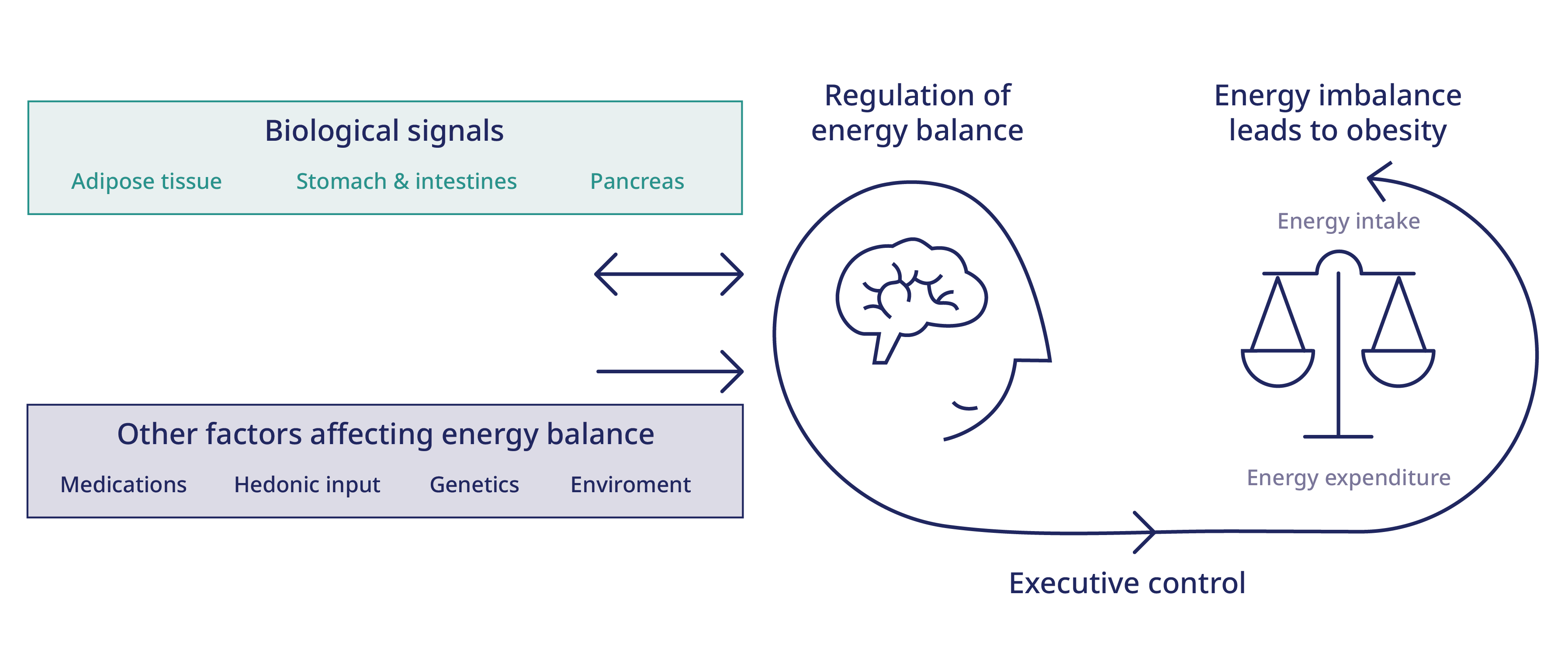
Environmental:
Many aspects of our environment can contribute to the development of obesity, including exposure to oversized food portions, lack of physical activity due to high amounts of screen usage and easy access to unhealthy food.15

Obesity affects over 764 million adults worldwide.2 In other parts of the world, it is recognised by healthcare professionals and organisations as a chronic disease which requires long-term management.1,3-6 The Awareness, Care and Treatment in Obesity MaNagement – an International Observation (ACTION IO) Study* found that 68% of people with obesity and 88% of healthcare professionals believe that obesity is a chronic disease. 7
Although both people with obesity and healthcare professionals outside of Australia recognise obesity as a chronic disease, it remains underdiagnosed and undertreated:8-10
*The Awareness, Care and Treatment in Obesity MaNagement – an International Observation (ACTION IO) Study is the first international study to investigate barriers to obesity management among people with obesity and healthcare professionals in 11 countries worldwide, including Australia. A total of 14,502 people with obesity and 2,785 healthcare professionals completed the survey.7
General practice has a central role to play in the prevention and management of obesity. General practitioners are often the first healthcare professionals to identify overweight and obesity and are positioned to initiate discussions about weight management.11 Despite 31% of Australian adults living with obesity,12 <1% of general practice consultations centre around obesity.11 While barriers to effective weight management consultations have been identified, such as lack of time, concerns about patient readiness and patient mental health,13 it is clear that a whole-of-systems approach is necessary to better address obesity management and prevention.11 This includes not only the healthcare sector, but also public health safeguards, town planning, transport, nutrition and education.11
Understanding energy balance is crucial to understanding the science to obesity.14 Altered energy balance contributes to the pathophysiology of obesity.14 In individuals with no malabsorption issues, stored energy in the body increases only if total energy intake (from food/ drink consumption) exceeds total body energy expenditure.14
Body energy expenditure can occur through physical activity, basal metabolism and adaptive thermogenesis.14 The body has complex homeostatic mechanisms which attempt to resist both weight loss or gain.14 Overly simplistic views initially determined that obesity resulted from food availability and acts of will.14 However, there are a number of molecular pathways involved in energy imbalance which contribute to obesity. These include the effects of the central nervous system on behaviour such as feeding and physical activity and also the action of the neuroendocrine system which controls the secretion of hormones such as leptin, insulin, oestrogen and growth and thyroid hormones.14
Adapted from Spiegelman BM & Flier JS. Obesity and the regulation of energy balance. Cell. 2001;104(4):531–43.
Many aspects of our environment can contribute to the development of obesity, including exposure to oversized food portions, lack of physical activity due to high amounts of screen usage and easy access to unhealthy food.15
Some people are genetically predisposed to developing obesity, depending on their family history.15 The regulation of body composition appears to be under genetic control, with twin studies reporting the heritability of BMI to be around 70–80%.16
Energy balance is a complex mechanism centrally regulated by the brain, with input from peripheral hormonal signals released from the gastrointestinal tract, pancreas and adipose tissue, which are integrated to regulate appetite and energy expenditure.17
Stress, boredom and psychological disorders are linked to overeating and can contribute to the development of obesity.15,18
Where a person lives, the society in which they live and their income can also influence their chances of developing obesity.19,20
In this short video, hear from Professor Carel le Roux as he discusses the importance of recognising obesity as a chronic disease.
This website is intended for healthcare professionals in Australia. Information contained on this website is general information and is not a substitute for medical advice. Patients should always consult with their healthcare professional.
You are about to access a site that is intended for Australian
healthcare professionals only, and not for general public.
Please confirm that you are a healthcare professional prior to
proceeding. Any information contained in this website is general
information and not a substitute for medical advice.
Last modified date July, 2024
AU24OB00056.






